- Home
- Deborah Harkness
The World of All Souls Page 33
The World of All Souls Read online
Page 33
When Diana learned that her own parents had spellbound her at the age of seven, she was shocked and ashamed. “Spellbinding was reserved for extreme circumstances—life-threatening danger, madness, pure and uncontrollable evil. Merely to threaten it earned you the censure of other witches.” Even other creatures understood the opprobrium that being spellbound signified for a witch. But gradually Diana came to understand that she had been spellbound to protect her from others, not the other way around. When Peter Knox attempted to steal the seven-year-old Diana’s magical knowledge, her parents took the only measure they could to keep their daughter safe. Knowing that one day Diana would need her powers back, her mother told her bedtime stories about a little witch named Diana whose fairy godmother wrapped her in invisible ribbons to protect her from the jealousy of other witches. When she was ready, the little witch would shrug off the ribbons and regain her power. When Diana was in the oubliette at La Pierre, she did just that—and flew to safety.
Once Diana had come to terms with her powers as a witch, she was confident enough to contemplate spellbinding others, either for their own good (as in the case of Jack Blackfriars, who was afflicted with blood rage) or for revenge. The witch Satu Järvinen had tortured Diana at La Pierre, and later she thwarted Diana’s efforts to enlist the Congregation’s help to save Matthew from Benjamin. The final straw, however, was threatening Diana’s children. Diana instantly spellbound Satu’s magical powers.
In modern Wicca, binding spells are used in a similar way, mainly to prevent someone from doing harm to themselves or their family. And Wiccans agree that binding spells should be used as a last resort, if at all.
Pentacles
A pentacle is an amulet with a symbol inscribed on it, used to summon supernatural powers. The word may have come from the French word pentacol or pendacol, meaning an ornament that is hung around the neck. The shape was not always a star; for example, the Key of Solomon, a grimoire falsely attributed to King Solomon but written in the fourteenth or fifteenth century, shows several pentacles that are not star shaped. In Wicca and other forms of witchcraft, however, the pentacle refers to a five-pointed star (pentagram) surrounded by a circle. Like other shapes that are composed of a single unbroken line, it is also used to mark off magical enclosures, especially when invoking spirits. During Diana’s forspell, the London witches formed a pentacle using twigs from their brooms, and Catherine Streeter chanted a spell that bound the area with a circle of fire.
When Diana’s weaver’s cords were absorbed into her body, the colors on her right hand came together to form the pentacle-shaped knot with five crossings on her wrist. While Sarah examined it, Diana explained that the fifth knot was what weavers used to cast spells for overcoming challenges or heightening experiences. Tied to Diana’s elemental magic, four of the star’s points represented the four elements: earth, air, fire, and water. The fifth, the green strand from Diana’s thumb, represented the goddess. (In Wicca the fifth point usually represents spirit.) Vivian Harrison, the high priestess of the Madison coven, observed that Diana’s hand constituted a magical primer; with the four elements, the pentacle, and the goddess, it comprised everything a witch needed to work the craft.
Witches are not the only creatures who used pentacles. They were central to John Dee and his daemonic assistant, Edward Kelley, in their conversations with angels. Before the angels imparted their secrets, they instructed Dee to create a magical table and a seal of truth (a nine-inch wax pentacle), engraved with complex designs. Dee was also required to gather talismans, a magical ring, a magic mirror, and a crystal. Edward Kelley sat at the magical table staring into the crystal while Dee sat at another table with a chart made up of forty-nine by forty-nine squares, each containing a letter. In the crystal, Kelley would see an angel holding an identical chart. As the angel indicated one letter at a time, Kelley passed the column and row number to Dee so that he could write it down on his own chart.
Of course, for additional protection from the power of angelic communication, the angels delivered their messages backward so that the magic would not be worked as they uttered the words.
Forspells
A forspell is a weaver’s first spell. Weavers of old cast their forspells as part of a ceremony that reveals the shape of their talents. The ceremony, which relies upon the support of other witches, helps the weaver to face her fears so that she can work her magic freely, and the ritual casting of the forspell often results in the appearance of the weaver’s familiar. Since the ceremony requires surrendering oneself to the unknown, it can be a frightening experience. Knowledge of this ceremony, like knowledge of the very existence of weavers, is hazy at best among present-day witches.
Shepherding Diana through her forspell ceremony required the cooperation of the entire London coven, who all showed up with their own unique brooms. They cleansed the area with salt, grounding the space so that Diana’s power didn’t spill out into the world once it was fully unbound. Once the ceremony had started, Diana saw that the room had filled with threads, “as though the world is nothing more than a tapestry.” Diana’s job was to remain still while Goody Alsop cut the threads, allowing them to return to Diana of their own volition. As Goody Alsop explained, “While some ties fetter your magic, others yoke the power in your blood to the four elements and the great mysteries that lie beyond them. Weavers learn how to release the ties that bind and use the rest.” Since Diana did nothing by halves, however, her forspell resulted in a great deal more, producing a firedrake as her familiar, a full-size rowan tree, and, finally, an appearance by the goddess, who claimed Diana’s life in her service as recompense for saving Matthew’s life in Madison.
Weaving
Weavers
Diana Bishop, Stephen Proctor, Goody Alsop, Agnes Sampson, Abraham ben Elijah, Mother Ursula Shipton, Isobel Gowdie, and Satu Järvinen belong to a rare and powerful type of witch called a weaver. Unlike ordinary witches, weavers cannot use other witches’ spells, so they must learn to create (weave) their own.
Witches are tied to the world around them, and weavers are able to see these connections in strands and hues that are invisible to other creatures. Some ties fetter a witch’s magic while others yoke the power in the witch’s blood to the four elements and the great mysteries that lie beyond them. Weavers learn how to use the ties that bind the world and harness elemental magic to make new spells. They employ gramarye to translate their spells into words that other witches can use—although some spells resist translation, which is why there are a few that only the original weaver can work. Before a weaver can begin creating spells, she or he must first make a forspell, ideally as part of a forspell ceremony, that reveals the shape of their talents and their familiar (weavers are the only type of witch who have a familiar). Once this is done, the weaver can then begin his or her formal training.
Because weavers can create new spells that are useful to other witches, the earliest weavers were highly esteemed in their communities. Eventually, however, there came a time when weavers had created an abundance of useful spells and most witches had less need for their creative abilities. At the same time, they began to resent weavers’ powers and grew suspicious that weavers possessed spells that ordinary witches could not cast.
Weavers also possess one other ability that sets them apart from other witches. Only weavers can conceive a biological child with a vampire, so long as that vampire has blood rage. The Bright Born children of these unions inherit a combination of the qualities of their parents, being neither entirely witch nor vampire but a powerful combination of both creatures. This is what the witches discovered long ago, and it was the secret they sought to keep hidden.
Inspired by their growing fears and resentments of weavers and their Bright Born children, many witches began to hunt down the weavers among them, killing them and their families. Those few who managed to survive sent their children into hiding to keep them safe (weavers do not have a longer life span
than normal witches—or even humans, for that matter). For centuries weavers have kept their powers a closely guarded secret from all other creatures—humans, vampires, daemons, and particularly, other witches.
Knot Magic
All magical spells contain knots hidden within them. These knots were made by weavers, who tied together various strands that bind witches to the world in order to fulfill a specific desire or need. Most weavers used specially colored cords to craft their knots, though almost any kind of string will do in a pinch, as the cords are simply tools that witches use to work knot magic. Diana has strands of red, white, black, silver, gold, green, brown, blue, and yellow that she knots to weave her spells. Each color has a meaning, and when making a new spell Diana uses the cords and their meanings to focus on a particular question.
Nearly all witches who practice the craft are familiar with a few simple knots, most notably the slipknot and the double slipknot, which involve relatively few crossings of the cords. But weavers use knots with anywhere from three to nine crossings, depending upon the complexity of the spell. They then magically fuse the two ends of their cords together cleanly and invisibly to complete the spell and make an unbreakable weaving. The tenth knot, which very few weavers can make, is a complete unbroken circle without beginning or end, like the ouroboros. It is seemingly the simplest magic and knot, and it is also the most powerful. It signifies generation and destruction, with power over life and death. Only a weaver who stands between worlds, and therefore possesses the powers of both creation and destruction, can make the tenth knot. Diana Bishop inherited the ability to make it from her parents: her father, a weaver, gave her the power of creation, and her mother, who had an affinity for the darker magics, gave her the power of destruction.
Once any knot is made, it holds the desire of the weaver within it. The weaver uses gramarye, or the power to infuse the power of the knot in words, to hide the knot or knots from view and also to make the magic accessible to other witches. When another witch speaks the spell’s words, she awakens the hidden knots, where the power of the magic and desire is gathered and waiting.
The Rolfsen Knot Table was my inspiration for weavers’ knots, just as the inspiration for Diana’s magic was actually the branch of mathematics called topology—a kind of mathematical alchemy. Topology is the study of spaces and figures that can be stretched and twisted but not torn or stitched together. In other words, it’s the study of how certain objects can be manipulated and transformed—pulled, squashed, distorted—into appearing to be something else, without losing their essential properties or essence.
Glaem
The glaem (an Old English spelling of “gleam,” which is related to the word “glamour”), also known as a chatoiement, is what Gallowglass often sees shining all around Diana. This shimmer of light is a manifestation of her witch’s power. Only the most potent witches have this glow. Humans can sense something different about a witch’s aura, but a glaem is clearer to a vampire’s sharp eyesight, as well as to a daemon’s sensitive perceptions. To avoid attracting too much attention, Diana often has to cover her glaem with a disguising spell.
Familiars
Familiars in the All Souls world are particular only to weavers. They are manifested during a weaver’s forspell and are an extension of that weaver’s talents and power (although not all weavers are blessed with a familiar). Diana’s familiar, Corra, is a firedrake and was brought forth in sixteenth-century London as the witches trained Diana to understand and control her unusual powers.
CORRA
Corra comes from within Diana, taking form when she’s fully released from Diana’s body; the firedrake can cause very real havoc on her surroundings, particularly to Ysabeau’s priceless china at Sept-Tours. As Corra revealed to Diana, she is her but not her. At first Diana found it hard to control Corra, a sign that Diana had not yet learned to control and understand her own magical powers. When Corra’s excursions are over, she becomes smoke and is absorbed back into Diana’s body, though still alert and ready to react when needed. Corra was particularly protective, coiling her tail around Diana’s hips, for instance, after the tiltyard incident with Marlowe and Louisa. Diana’s father’s familiar was a heron called Bennu, reflecting the water in Stephen’s veins. And Goody Alsop’s familiar was a fetch, a shadowy replica of herself and much easier to control than an errant firedrake.
The inspiration for Diana’s familiar, Corra, was taken from seventeenth-century engravings and watercolors. Dragons were a topic of interest to Renaissance natural philosophers, who combed through travel stories and myth to construct elaborate dragon taxonomies.
The idea of a “familiar spirit” or just “familiar” is a common one in European folk tales and witch lore, as well as in modern-day Wicca. Familiars were believed to be supernatural beings, and they took a wide range of forms. Appearing as anything from demons to fairies, but most commonly taking animal form, they served a witch and aided her in her magic. Much can be gleaned from witch trials of the sixteenth and seventeenth centuries about earlier beliefs in familiars: Agnes Sampson’s trial in Scotland referred to her use of a familiar, and on the frontispiece for Matthew Hopkins’s Discovery of Witches there are depictions of witches identifying their familiars. The infamous Malleus Malleficarum also refers to how witches “invoke their [personal] devil who always works alongside them in everything they do.” Connected to this idea of the animal helper, the black cat is associated with the stereotype of a modern witch. This animal’s association with magic and the devil is probably related to brutal cat burnings that took place in France from the medieval period up to the nineteenth century. In Wicca today beliefs about familiars tend to focus more on the spiritual connection between a witch and an animal, creating a partnership in their magical practices and everyday life.
GOLEM OF PRAGUE
Yosef, the Golem of Prague, was Abraham ben Elijah’s familiar. At first Abraham didn’t think he would have a familiar, as nothing appeared during his forspell, but he later accidentally created Yosef while weaving a spell to help a woman conceive. Abraham placed the secret name of God into the golem’s mouth, and it came to life. One night Abraham left the golem unattended, and it wandered out of the Jewish Town and frightened Christians in the city, leading the Jews to believe that Yosef’s purpose was to protect them.
In Jewish folklore a golem is an animated being that is created out of inanimate matter, such as clay or mud. In the Talmud, Adam was created as a golem when his dust was “kneaded into a shapeless husk.” In some stories the golem is animated by words written either on its forehead or on a piece of paper that is then placed in its mouth. Modern-day descriptions of the Golem of Prague claim that it was Rabbi Loew who created it and that he did so specifically to protect the Jews of the city after Rudolf II decided to expel or kill them. The golem had attacked and killed a number of Christians before the emperor begged Rabbi Loew to deactivate it. Loew did so only after securing Rudolf’s promise to stop persecuting the Jews, with the understanding that he could always bring it back to life if the emperor broke his promise. A different story says the golem fell in love and became a vicious monster after it was rejected.
Historians generally believe that the legend of the Golem of Prague was invented in Germany in the early nineteenth century. No Hebrew work published between the sixteenth, seventeenth, and eighteenth centuries mentions a golem created by Rabbi Loew.
Timewalking
In Diana and Matthew’s world, a few witches have the ability to timewalk. They can leave the present and travel either to the past or the future. This is a genetic ability among witches, inherited through one or both parents. Both Diana and her father, Stephen, are timewalkers. In Diana’s case the ability came to her through her absorbed or vanished twin brother, who had inherited it from their father. This is tied in with something else Matthew discovered in Diana’s DNA; she is a chimera. It is a rare condition in which a person possesses two o
r more different genetic profiles and genetically distinct types of cells (occurring most commonly with twins). In Greek mythology a chimera is depicted as a hybrid animal, most often a lion with the head of a goat. For Diana, being a chimera means possessing even more magical powers.
Some witches, including Diana, discover that they are able to travel relatively brief distances through space and time. By picking up their feet and using only the fervent desire to be in a particular place and time, they can transport themselves. But to travel long distances back in time as safely as possible, most timewalkers need to steer themselves to the right moment with three objects from the particular destination. So when Diana traveled from modern-day upstate New York to Oxford in 1590, she took an old chess piece, Matthew’s copy of Doctor Faustus, and the pearl earring from Bridget Bishop’s poppet. To travel forward in time, a witch needs witchcraft; it’s the only way to find your way. So to timewalk back to the present, Diana used all nine of her cords and a total of nine different knots.
Time is a substance made up of threads of light and color that timewalkers perceive as a huge, shimmering, gently waving spiderweb. The millions of differently colored strands extend infinitely forward and backward in time. With enough concentration a timewalker can focus on a single twisted thread and follow it to its source. That apparent simplicity masks the knots of possibility that tie an unimaginable number of pasts to a million presents and untold potential futures. This means that for even the most experienced witches, timewalking is dangerous, because the farther the distance, the greater the risk of losing their way among the innumerable strands of pasts, presents, and futures. It is possible to bring another person along, but as Diana discovered when traveling with Matthew, that extra traveler makes the journey much slower and more difficult. Unlike Diana, Matthew is unable to perceive the threads of time. For him time travel is utterly silent and dark. There are some times of the year, particularly on days like All Hallows’ Eve (Halloween), when past and present are close together, making it easier to slip between them. But even on All Hallows’ Eve, timewalking taxes a witch’s powers greatly, and Diana found herself both exhilarated and utterly exhausted once they’d arrived safely in 1590.

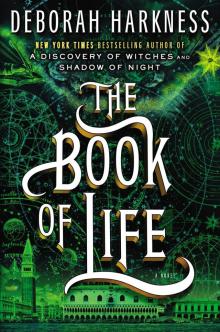 The Book of Life
The Book of Life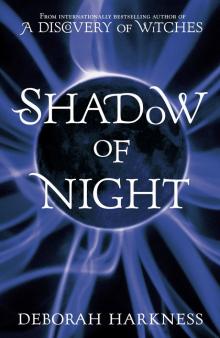 Shadow of Night
Shadow of Night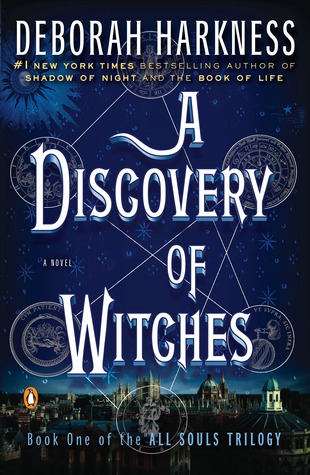 A Discovery of Witches
A Discovery of Witches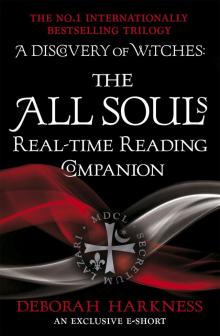 The All Souls Real-Time Reading Companion
The All Souls Real-Time Reading Companion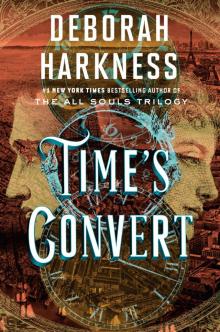 Time's Convert
Time's Convert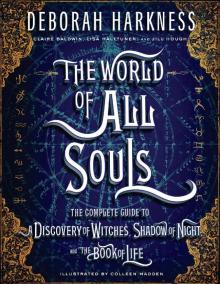 The World of All Souls
The World of All Souls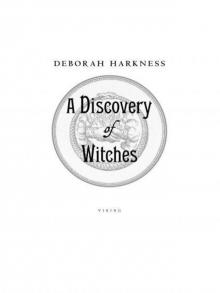 A Discovery of Witches: A Novel (All Souls Trilogy)
A Discovery of Witches: A Novel (All Souls Trilogy) Shadow of Night: A Novel
Shadow of Night: A Novel